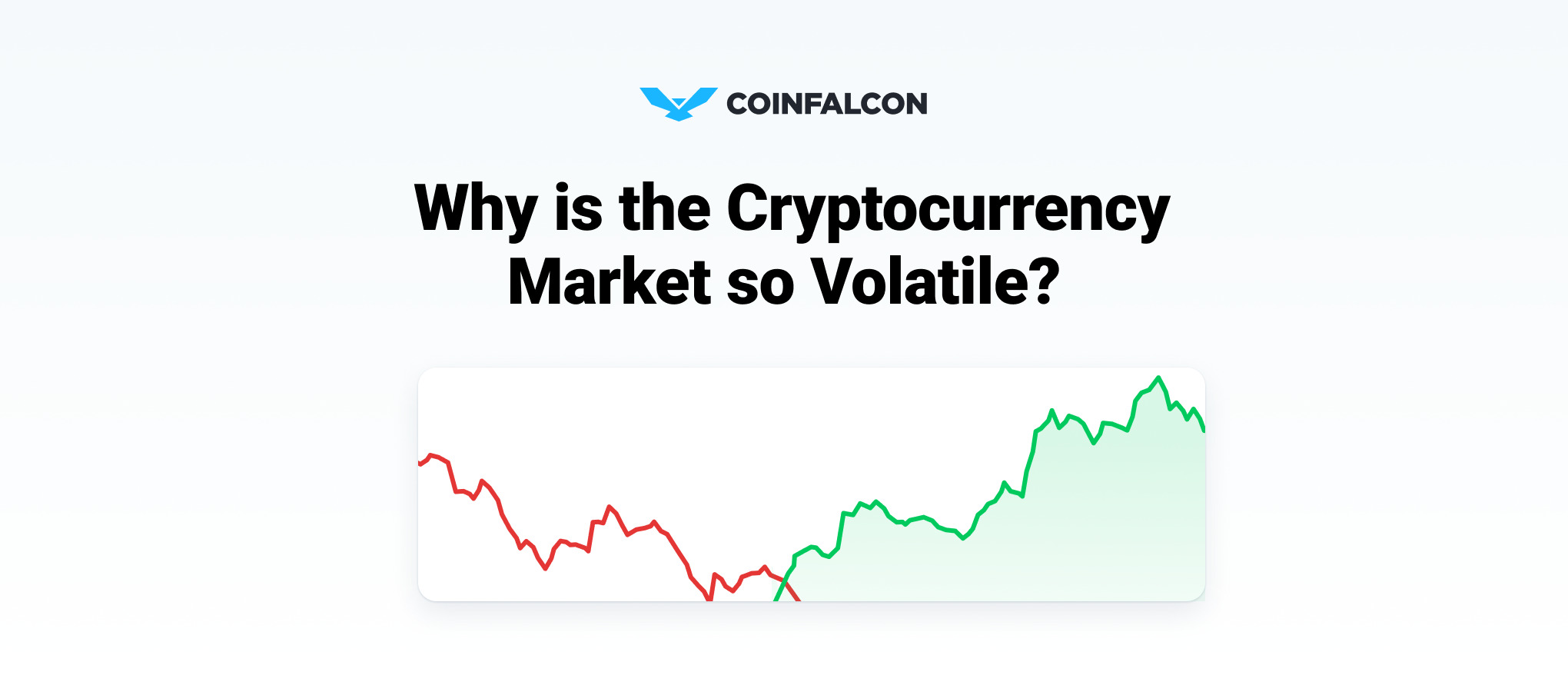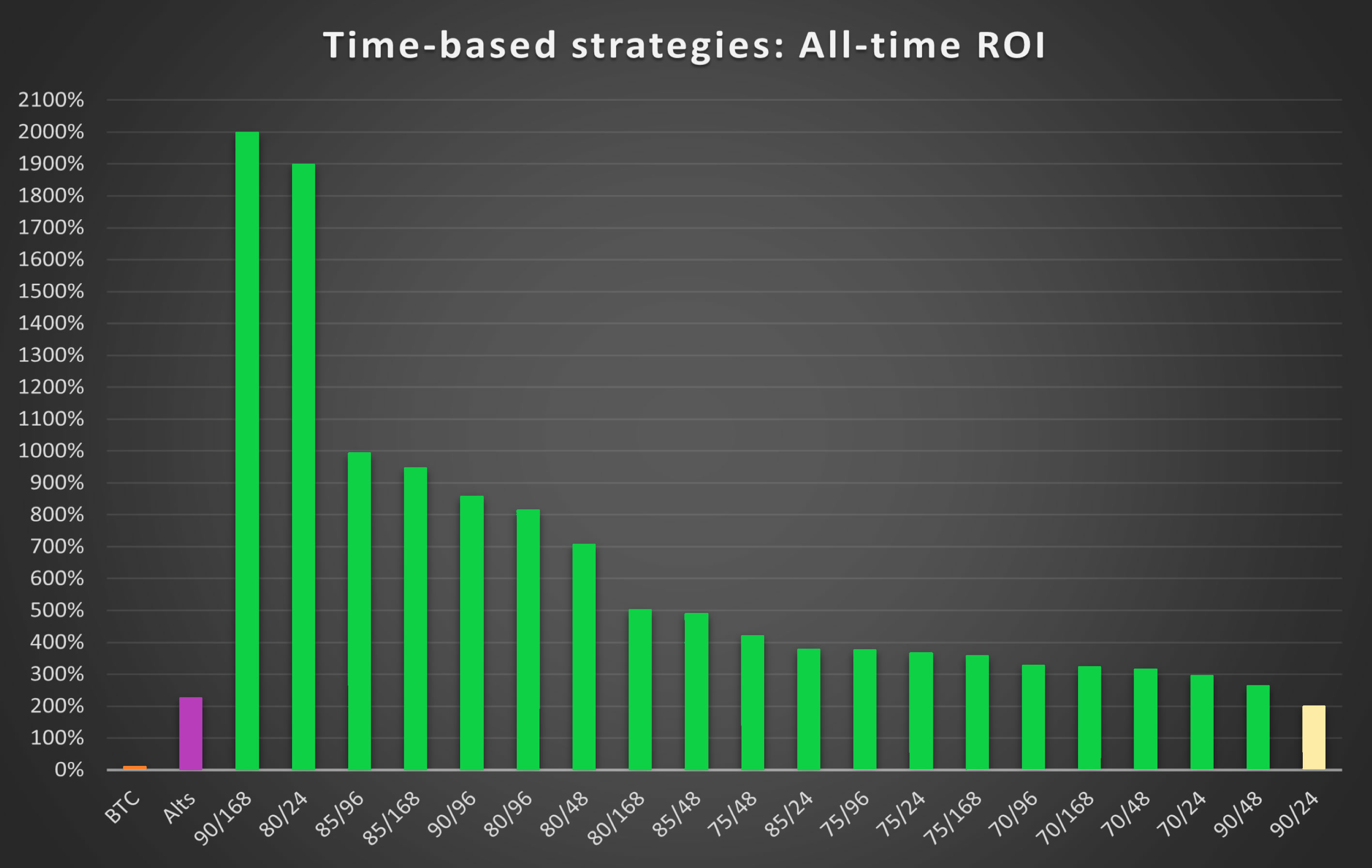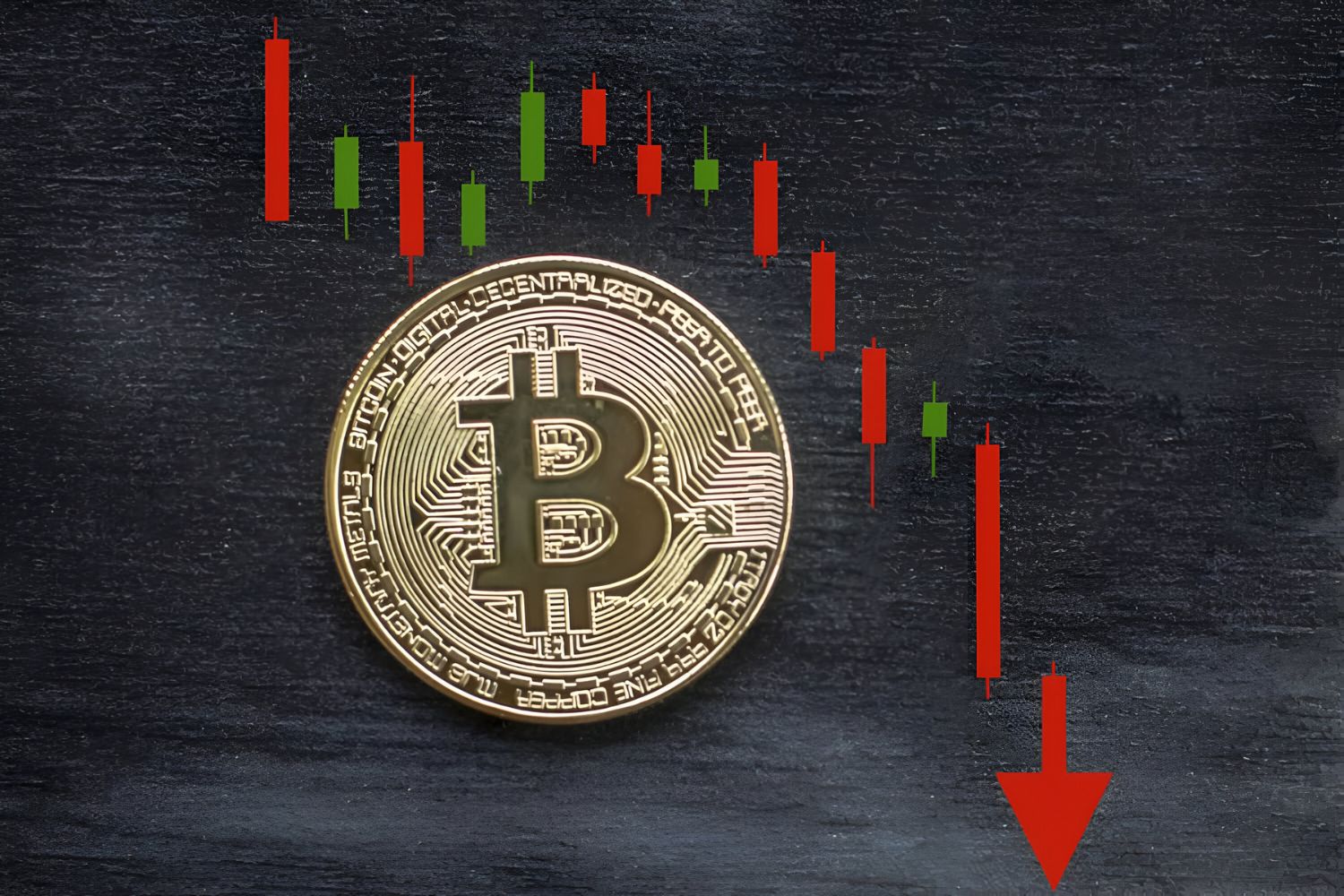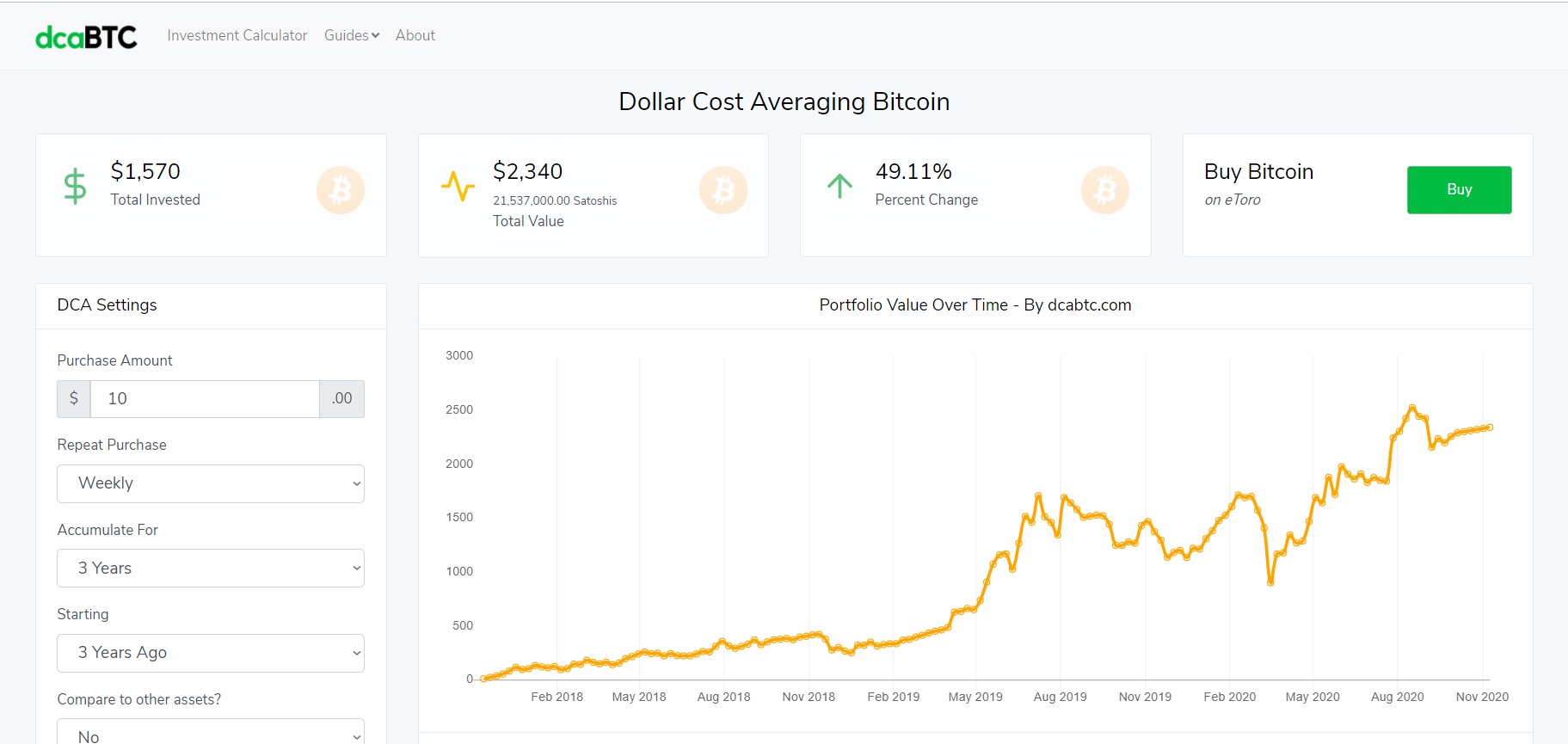Introduction
Welcome to the exciting world of cryptocurrency, a digital revolution that has taken the financial markets by storm. From Bitcoin to Ethereum, these decentralized currencies have garnered attention worldwide, creating a new frontier of potential wealth and investment opportunities. However, with the promises of enormous returns comes a significant level of volatility. Cryptocurrencies are known for their roller coaster-like price movements, which can leave investors both thrilled and cautious.
So, what exactly is cryptocurrency? It is a type of digital or virtual currency that uses cryptography for security. Unlike traditional currencies issued by governments or central banks, cryptocurrencies operate on a decentralized network called blockchain. This technology ensures transparency, immutability, and security of transactions, making it a revolutionary alternative to traditional financial systems.
One of the key characteristics of cryptocurrencies is their extreme volatility. The prices of cryptocurrencies can swing dramatically in a short period, leading to immense profit or potential loss. This volatile nature has captured the attention of investors, traders, and speculators alike, driving the popularity and intrigue surrounding the world of cryptocurrency.
There are various factors that contribute to the volatility of cryptocurrencies. These factors can range from technological advancements to market sentiment, regulatory changes, economic factors, and even instances of market manipulation. Understanding these factors is crucial for anyone interested in venturing into the world of cryptocurrency investment.
In this article, we will explore the reasons behind the volatility in cryptocurrencies and how these factors shape the market. We will delve into the technological and infrastructural aspects that impact the price movements, along with the role of market sentiment and regulatory environment. Furthermore, we will examine the influence of economic factors and market manipulation on the volatility of cryptocurrencies.
By understanding the sources of volatility, investors can make informed decisions and mitigate potential risks. So, let’s embark on this journey to unravel the mysteries of cryptocurrency volatility and gain insights into this ever-evolving landscape.
What is Cryptocurrency?
Cryptocurrency is a form of digital or virtual currency that uses cryptography for security. It operates on a decentralized network called blockchain, which ensures the transparency, immutability, and security of transactions. Unlike traditional currencies that are issued and regulated by governments or central banks, cryptocurrencies are not controlled by any central authority.
The most well-known and widely used cryptocurrency is Bitcoin, which was created in 2009 by an anonymous person or group of people using the pseudonym Satoshi Nakamoto. Since the inception of Bitcoin, thousands of other cryptocurrencies, known as altcoins, have emerged, each with its own unique features, purposes, and applications.
Cryptocurrencies are digital assets that exist solely in electronic form. They are stored in digital wallets, which can be accessed through various devices such as computers, smartphones, or hardware wallets. These wallets use cryptographic techniques to secure transactions and control the creation of new units of the cryptocurrency.
One of the revolutionary aspects of cryptocurrencies is their decentralization. Traditional currencies rely on centralized systems, such as banks or financial institutions, to facilitate transactions. In contrast, cryptocurrencies operate on a peer-to-peer network, where transactions are directly conducted between participants without the need for intermediaries.
The underlying technology that enables cryptocurrencies to function is blockchain. A blockchain is a distributed ledger that records all transactions and ensures their integrity and transparency. Each transaction is grouped into a block, which is then added to the chain of previous blocks, creating a permanent and immutable record of all transactions.
The use cases of cryptocurrencies extend beyond being a medium of exchange. They have also paved the way for innovative applications such as smart contracts, decentralized finance (DeFi), and tokenization. Smart contracts are self-executing contracts with predefined terms and conditions, which are automatically enforced once the conditions are met. DeFi refers to the use of blockchain technology and cryptocurrencies to recreate traditional financial services, such as lending, borrowing, and trading, in a decentralized manner. Tokenization involves creating digital representations of real-world assets, such as real estate or artwork, on the blockchain.
Overall, cryptocurrencies have garnered significant attention and adoption due to their potential to disrupt traditional financial systems and empower individuals with greater financial autonomy. While the concept of cryptocurrencies may seem complex, their underlying principles of decentralization, security, and transparency provide a foundation for a new paradigm of digital currencies.
Volatility in Cryptocurrency
Volatility is a defining characteristic of the cryptocurrency market. Prices of cryptocurrencies can fluctuate wildly within short periods, leading to significant gains for some investors and substantial losses for others. This inherent volatility has both attracted and deterred individuals from participating in the cryptocurrency market.
One of the primary reasons for the volatility in cryptocurrencies is the absence of a central authority or regulatory body that can stabilize prices. Unlike traditional financial markets where central banks and government policies play a significant role in maintaining stability, the cryptocurrency market is driven by supply and demand dynamics and influenced by various factors.
The relatively nascent stage of cryptocurrencies and the lack of widespread adoption contribute to their volatility. The market is still evolving, with new developments, technologies, and regulations constantly emerging. As a result, the market sentiment surrounding cryptocurrencies can change rapidly, leading to abrupt price fluctuations.
Moreover, the limited liquidity in the cryptocurrency market exacerbates volatility. Cryptocurrency markets can be relatively small compared to traditional financial markets, making it easier for large trades to have a significant impact on prices. As a result, even a single substantial buy or sell order can cause substantial price swings.
Additionally, the speculative nature of cryptocurrency investments contributes to volatility. The allure of quick, substantial returns has attracted a large number of traders and speculators to the market. These participants, driven by emotions and market trends, can amplify price movements, leading to increased volatility.
Furthermore, the 24/7 nature of cryptocurrency trading, with markets operating globally across different time zones, intensifies volatility. Price movements can occur at any time, and investors who are unable to respond quickly may be exposed to greater risks.
It is important to note that not all cryptocurrencies experience the same level of volatility. Established cryptocurrencies such as Bitcoin and Ethereum tend to have greater stability compared to smaller, less-established altcoins. This is primarily due to the larger market capitalization and wider adoption of these cryptocurrencies, which can buffer against extreme price swings.
While the volatility in cryptocurrencies can be daunting, it also presents opportunities for traders and investors. Price fluctuations can create substantial profit potential, especially for those who can accurately predict and exploit market movements. However, it is crucial to exercise caution and employ risk management strategies to mitigate potential losses.
In the next sections, we will explore the various factors that contribute to the volatility of cryptocurrencies. By understanding these factors, individuals can gain insights into the dynamics of the cryptocurrency market and make more informed investment decisions.
Factors Causing Volatility
Several factors contribute to the volatility observed in the cryptocurrency market. These factors can range from technological advancements and market sentiment to regulatory changes, economic factors, and even instances of market manipulation. Understanding these factors is crucial for investors and traders aiming to navigate the cryptocurrency market. Let’s explore some of the key factors:
Technology and Infrastructure:
Technological advancements and improvements in the underlying blockchain technology can significantly impact the volatility of cryptocurrencies. Updates to the protocol, scalability solutions, or security enhancements can influence market sentiment and investor confidence. Additionally, issues such as network congestion or security breaches can lead to price fluctuations as market participants react to potential vulnerabilities.
Market Sentiment:
The sentiment and perception of market participants play a vital role in cryptocurrency volatility. Positive news, such as partnerships with established companies or regulatory developments that promote cryptocurrency adoption, can lead to an increase in demand and price appreciation. Conversely, negative news, such as security breaches or regulatory crackdowns, can cause panic selling and price drops.
Regulatory Environment:
The regulatory landscape significantly influences the volatility of cryptocurrencies. Government regulations and policies regarding the use, taxation, and legality of cryptocurrencies can create uncertainty and impact market sentiment. Sudden changes in regulations or announcements of potential bans in certain jurisdictions can lead to swift market reactions and increased volatility.
Economic Factors:
Economic factors, both global and specific to the cryptocurrency market, can impact price volatility. Factors such as inflation, interest rates, geopolitical events, and economic indicators can influence investor sentiment and capital flows. Additionally, market participants may react to macroeconomic events by either seeking refuge in cryptocurrencies or liquidating their holdings to hedge against potential risks.
Market Manipulation:
The cryptocurrency market is susceptible to market manipulation due to its relatively small size and lack of regulation. Activities such as pump-and-dump schemes, fake news, and price manipulation by whales (large traders with significant holdings) can lead to artificial price spikes and subsequent crashes. These manipulative practices can introduce additional volatility and undermine the stability of the market.
It is important to note that these factors are interrelated and can influence each other. For example, positive regulatory developments can boost market sentiment, while advancements in technology can enhance the scalability and security of cryptocurrencies. Traders and investors should carefully analyze and monitor these factors to make informed decisions and mitigate risks associated with volatility.
In the following sections, we will delve deeper into each of these factors to gain a comprehensive understanding of their impact on the volatility of cryptocurrencies.
Technology and Infrastructure
Technology and infrastructure play a crucial role in shaping the volatility of cryptocurrencies. The advancements in the underlying blockchain technology, as well as any changes or updates to the cryptocurrency’s protocol, can have a significant impact on market dynamics. Additionally, issues related to network scalability, security, and overall infrastructure stability can influence investor sentiment and contribute to price volatility.
One of the primary factors influencing cryptocurrency volatility is the ongoing development and improvement of blockchain technology. As new technologies and innovations are introduced, they can enhance the functionality, efficiency, and security of cryptocurrencies. For example, the development of new consensus algorithms, such as Proof of Stake (PoS) or Directed Acyclic Graph (DAG), can address scalability and energy consumption issues associated with the traditional Proof of Work (PoW) protocol used by Bitcoin. These advancements can generate positive market sentiment, leading to price increases for cryptocurrencies utilizing these technologies.
On the other hand, vulnerabilities or security breaches in a cryptocurrency’s infrastructure can have a detrimental impact on its price. Instances of hacking, unauthorized access, or manipulation of the underlying technology can erode trust and create panic among investors. Such incidents often lead to significant price drops as market participants react to the potential risks associated with compromised security.
In addition to overall technological advancements, issues related to scalability and transaction speeds can also influence volatility. As cryptocurrencies gain popularity and more users join the network, the scalability of the underlying technology becomes crucial. If a cryptocurrency’s infrastructure struggles to handle the increasing volume of transactions, it can lead to network congestion and delays. These issues can negatively impact user experience and, consequently, investor sentiment, potentially resulting in price volatility.
The stability and reliability of the infrastructure supporting a cryptocurrency also play a role in its volatility. Market participants closely monitor any disruptions or technical issues that may impact the availability and functionality of cryptocurrency platforms. Outages or service interruptions can cause panic selling and trigger price volatility as investors scramble to protect their holdings or seek alternative options.
As the cryptocurrency landscape evolves, so too does the technology and infrastructure supporting these digital assets. Investors and traders should stay informed about the latest advancements, upgrades, and vulnerabilities in order to make well-informed investment decisions. Monitoring developments such as protocol upgrades, scalability solutions, and security enhancements can provide valuable insights into the potential impact on the price volatility of cryptocurrencies.
In the next sections, we will explore other factors that contribute to the volatility of cryptocurrencies, including market sentiment, regulatory environment, economic factors, and market manipulation.
Market Sentiment
Market sentiment plays a critical role in shaping the volatility of cryptocurrencies. It refers to the overall feeling or perception that market participants have towards a particular cryptocurrency or the cryptocurrency market as a whole. Positive or negative sentiment can have a significant impact on demand, supply, and ultimately, the price of cryptocurrencies.
Positive market sentiment often arises from news and developments that reflect favorably on cryptocurrencies. For example, announcements of partnerships with established companies, regulatory support, or positive media coverage can generate optimism and excitement among investors. Positive sentiment can increase demand for a particular cryptocurrency, leading to price appreciation and reduced volatility.
Conversely, negative market sentiment can arise from various factors, such as reports of security breaches, regulatory crackdowns, or negative media coverage. Fears of government intervention, scams, or fraudulent activities can erode trust and confidence in cryptocurrencies, triggering panic selling and resulting in price drops. Negative sentiment amplifies volatility as market participants react based on fear and uncertainty.
The nature of the cryptocurrency market amplifies the impact of market sentiment on volatility. Cryptocurrencies, particularly those with lower market capitalization, are more susceptible to drastic price movements due to the relatively small number of participants. A single influential individual or a small group of traders can influence sentiment through their actions, exerting significant control over the market and contributing to volatility.
Moreover, cryptocurrency markets are highly speculative, driven by investor sentiment and market trends. Emotional responses and herd mentality can lead to price bubbles or sudden crashes. When positive sentiment is widespread, investors may engage in FOMO (Fear Of Missing Out) and rush to invest, pushing prices to unrealistic levels. Conversely, when negative sentiment dominates, panic selling can trigger a cascade of sell orders, causing sharp price declines.
It is crucial for market participants to monitor and interpret market sentiment effectively. Various tools and techniques, such as sentiment analysis algorithms and monitoring social media communities, can provide insights into the overall sentiment and help identify potential market trends. However, it is important to exercise caution and not solely rely on sentiment analysis as it can be influenced by false information, manipulation, or biases.
Overall, market sentiment plays a significant role in the volatility of cryptocurrencies. Positive sentiment can drive prices higher, while negative sentiment can lead to price drops. Traders and investors should be mindful of the impact of market sentiment on their decision-making process and consider multiple factors when evaluating the potential risks and rewards of cryptocurrency investments.
In the next sections, we will explore other factors contributing to cryptocurrency volatility, including the regulatory environment, economic factors, and market manipulation.
Regulatory Environment
The regulatory environment plays a crucial role in shaping the volatility of cryptocurrencies. Governments and regulatory bodies around the world are still grappling with the complexities and implications of cryptocurrencies, resulting in varying degrees of regulation and oversight. Changes in regulations and policies can have a significant impact on the sentiment and stability of the cryptocurrency market.
Regulatory developments can influence cryptocurrency volatility in several ways. Positive regulatory actions, such as the recognition and acceptance of cryptocurrencies by governments or the implementation of investor protection frameworks, can instill confidence and attract more participants to the market. This can lead to increased demand and potentially reduced volatility.
Conversely, negative regulatory actions or uncertainty in the regulatory landscape can create anxiety and fear among investors, resulting in market volatility. Governments may impose restrictions, enforce stricter Know Your Customer (KYC) and Anti-Money Laundering (AML) regulations, or even ban cryptocurrencies altogether. These actions can lead to panic selling and price drops as market participants respond to the perceived risks and uncertainties.
The global nature of cryptocurrencies often presents challenges for regulators trying to establish unified frameworks. Different countries have varying views and approaches towards cryptocurrencies, creating a fragmented regulatory landscape. Regulatory developments in major economies, such as the United States, China, or the European Union, can have a significant impact on the overall sentiment and volatility of the cryptocurrency market.
Additionally, the lack of clear regulations or inconsistent enforcement can contribute to volatility. Ambiguities and gray areas in cryptocurrency regulations create uncertainty and can result in market manipulation or fraudulent activities. Market participants may be hesitant to engage in cryptocurrency transactions due to concerns about legal and compliance issues, further exacerbating volatility.
Moreover, regulatory actions need to strike a delicate balance between protecting investors and fostering innovation. Heavy-handed regulation can stifle technological advancements and discourage market participation, while lax regulation can lead to increased risks and potential market manipulations. Finding the right regulatory approach is an ongoing challenge that regulators worldwide are facing.
It is important for traders and investors to stay informed about regulatory developments in the jurisdictions where they operate or have investments. Regulatory announcements, policy changes, and enforcement actions can have an immediate impact on cryptocurrency prices. By staying up to date with the regulatory environment, market participants can better assess the potential risks and adjust their strategies accordingly.
In the next sections, we will explore other factors influencing cryptocurrency volatility, including economic factors, market sentiment, and market manipulation.
Economic Factors
Economic factors significantly contribute to the volatility of cryptocurrencies. The interconnectedness between the global economy and the cryptocurrency market means that macroeconomic events and indicators can influence investor sentiment and, consequently, the price movements of cryptocurrencies.
Inflation, interest rates, and currency fluctuations are some of the economic factors that can impact the volatility of cryptocurrencies. When traditional currencies experience high inflation or undergo devaluation, individuals may seek alternative investment options such as cryptocurrencies, leading to increased demand and upward price movements. Similarly, changes in interest rates can affect the opportunity cost of holding cryptocurrencies, influencing investor decisions and potentially affecting price volatility.
Geopolitical events can also have a significant impact on cryptocurrency volatility. Political instability, trade wars, or economic crises in major economies can create uncertainties and drive investors towards cryptocurrencies as a hedge against traditional financial systems. For example, during the Greek debt crisis in 2015, the price of Bitcoin surged as investors sought a safe haven for their assets.
Moreover, economic indicators, such as GDP growth, employment rates, or consumer confidence, can also influence cryptocurrency volatility. Positive economic indicators can boost investor sentiment, leading to increased demand and potentially lower volatility. Conversely, negative economic indicators can create fears of a financial downturn, prompting investors to seek alternatives like cryptocurrencies, which can drive up prices and increase volatility.
Cryptocurrencies, in some cases, can also be influenced by the economic conditions specific to the blockchain industry. For instance, developments in the broader blockchain ecosystem, such as the adoption of decentralized applications (dApps), utilization of blockchain technology in various industries, or partnerships with established enterprises, can contribute to market sentiment and the perceived value of a particular cryptocurrency.
It is important for traders and investors in cryptocurrencies to stay informed about economic events and indicators that can impact the market. Monitoring central bank announcements, economic reports, and geopolitical developments can provide insights into the potential risks and opportunities associated with cryptocurrency investments.
However, it is essential to note that while economic factors can influence cryptocurrency volatility, the relationship between traditional financial markets and the cryptocurrency market is not always straightforward. Cryptocurrencies are still relatively new and their correlation with traditional economic indicators can vary, making it crucial for market participants to conduct thorough research and analysis.
In the next sections, we will explore other factors influencing cryptocurrency volatility, including market sentiment and market manipulation.
Market Manipulation
Market manipulation is a significant factor contributing to the volatility of cryptocurrencies. Due to the relatively small size and lack of regulation in the cryptocurrency market, it is susceptible to manipulation by individuals or groups aiming to manipulate prices for their own gain. Manipulative practices can cause artificial price fluctuations, leading to increased volatility and potential losses for unsuspecting investors.
One form of market manipulation is known as “pump and dump.” In this scheme, a group of individuals artificially inflates the price of a cryptocurrency by spreading positive news or giving false signals about its potential value. Once the price rises significantly, these individuals sell their holdings, causing the price to crash and leaving other investors with losses.
Another form of manipulation is the spreading of false information or fake news. False reports about partnerships, regulatory developments, or technological advancements can create a frenzy of buying or selling, leading to volatile price movements. Cryptocurrency communities and social media platforms are often targeted by manipulators seeking to create hype or fear to manipulate prices.
Whales, or individuals/organizations holding significant amounts of a particular cryptocurrency, can also influence the market through their trading activities. By strategically buying or selling large volumes of a cryptocurrency, they can create artificial price movements and trigger panic among smaller investors, causing them to panic sell or buy.
Lack of regulation and oversight in the cryptocurrency market makes it more vulnerable to market manipulation. While traditional financial markets have stricter regulations and mechanisms in place to detect and prevent manipulation, the decentralized and unregulated nature of cryptocurrencies creates opportunities for manipulators to exploit loopholes and affect prices.
Market manipulation not only impacts the immediate price of a cryptocurrency but can also have long-term effects on market sentiment and overall stability. Frequent instances of manipulation can erode trust and discourage mainstream adoption, potentially leading to reduced liquidity and increased volatility.
As an investor or trader, it is essential to be cautious and vigilant for signs of potential market manipulation. Conducting thorough research, analyzing trading volumes and patterns, and staying informed about relevant news and events can help identify suspicious activities. Additionally, regulatory bodies and law enforcement agencies are working towards implementing measures to detect and prevent market manipulation in the cryptocurrency market.
It is important to note that while market manipulation can contribute to volatility, not all price movements are a result of manipulative practices. Genuine market forces and investor sentiments also play a significant role. Therefore, it is vital to evaluate the overall market conditions and multiple factors when making investment decisions.
In the next sections, we will bring together the factors explored in this article to understand the overall impact of volatility on the cryptocurrency market.
Historical Examples of Cryptocurrency Volatility
The history of cryptocurrencies is marked by numerous instances of extreme volatility, showcasing the inherent risks and opportunities associated with this emerging asset class. These events serve as an important reminder of the unpredictable nature of the cryptocurrency market and the potential for significant price swings. Let’s examine some notable historical examples of cryptocurrency volatility:
Bitcoin’s Price Surge and Crash in 2017-2018:
In late 2017, Bitcoin experienced an unprecedented surge in price, reaching its all-time high of nearly $20,000. The sudden rise in demand, driven by media attention and investor speculation, fueled a buying frenzy. However, the euphoria was short-lived, as the market corrected sharply in early 2018. Bitcoin’s price plummeted by over 80% in a matter of months, highlighting the extreme volatility and vulnerability of the cryptocurrency market.
The Mt. Gox Hack in 2014:
Mt. Gox, one of the largest cryptocurrency exchanges at the time, suffered a massive hacking attack in 2014. The breach resulted in the loss of approximately 850,000 Bitcoins, representing a significant portion of the total supply at that time. This incident shook the confidence of investors and triggered a severe price drop. Bitcoin’s price fell by more than 50%, underscoring the vulnerability of cryptocurrencies to security risks and the impact such incidents can have on market volatility.
ICO Boom and Bust in 2017-2018:
The rise of Initial Coin Offerings (ICOs) in 2017 led to a surge in new cryptocurrencies entering the market. Many of these ICOs promised groundbreaking technology and substantial returns, attracting a frenzy of investor interest. However, as the hype died down and regulatory concerns increased, many of these projects failed to deliver on their promises. Consequently, the market experienced a wave of ICO failures and subsequent price collapses, showcasing the risks associated with investing in newly launched cryptocurrencies.
Black Thursday in March 2020:
In March 2020, the cryptocurrency market, along with global financial markets, experienced a sudden crash in response to the COVID-19 pandemic. Bitcoin’s price dropped by over 50% within a 24-hour period, as investors rushed to liquidate their assets and seek stability amidst the heightened economic uncertainty. This event demonstrated the interconnectedness between traditional financial markets and cryptocurrencies, with prevailing market conditions impacting the volatility of digital assets.
These historical examples are just a few instances of the significant price volatility that cryptocurrencies have experienced. They highlight the importance of understanding the risks associated with investing in this market and the need for prudent risk management strategies.
However, it is important to note that volatility cuts both ways. While extreme price movements can lead to significant losses, they also present opportunities for substantial gains for astute traders and investors who can accurately navigate the market.
By considering the evolution of the cryptocurrency market and analyzing historical events, participants can gain valuable insights into the factors that drive volatility and make more informed decisions.
In the following section, we will discuss the implications of cryptocurrency volatility and whether it can be viewed as a positive or negative aspect of this emerging asset class.
Is Volatility a Good or Bad Thing?
Volatility in the cryptocurrency market is a topic of much debate among investors and analysts. Some argue that volatility is detrimental, as it can lead to significant losses and create hesitancy among potential investors. Others view volatility as a crucial characteristic that provides opportunities for profit and attracts traders and speculators to the market. So, is volatility a good or bad thing for cryptocurrencies? Let’s explore both sides of the argument:
The Case Against Volatility:
Detractors of volatility highlight several reasons why it can be seen as a negative aspect of cryptocurrencies. First and foremost, volatility introduces a level of risk that can deter conservative investors who prefer more stable assets. The potential for rapid price swings can lead to substantial losses if trading decisions are not carefully thought out or if risk management strategies are not employed.
Volatility can also hinder the mainstream adoption of cryptocurrencies. The erratic price movements can create uncertainty and make it difficult for cryptocurrencies to be used as a reliable medium of exchange or store of value. Businesses and consumers may be hesitant to transact with a currency that can experience significant price fluctuations within short timeframes.
Additionally, market manipulation, which often thrives in volatile markets, can erode trust and confidence in cryptocurrencies. The presence of pump-and-dump schemes, fake news, and other manipulative practices can lead to price distortions and harm the reputation of the market. In turn, this can impede the development of a transparent and efficient market ecosystem.
The Case for Volatility:
Proponents of volatility argue that it is an inherent characteristic of emerging and high-growth markets. Volatility creates opportunities for traders and investors to profit from market fluctuations. Price movements, both up and down, can be exploited by those who are skilled at timing the market or engaging in short-term trading strategies.
Furthermore, volatility can be viewed as a factor that attracts traders and speculators to the market, thereby increasing liquidity. Traders seeking volatility are often drawn to the potential for high returns that can be achieved in shorter timeframes. This increased participation can result in deeper markets and enhanced price discovery mechanisms.
Volatility also fosters innovation and technological advancement within the cryptocurrency market. The need to address scalability, security, and usability issues becomes more pressing in times of increased market volatility. This drive for improvement can lead to the development of new technologies, more robust infrastructure, and the establishment of regulatory frameworks to mitigate risks.
Moreover, cryptocurrency volatility can serve as a means of wealth redistribution. By challenging traditional financial systems and providing access to individuals who may have been excluded from traditional investment opportunities, volatility can create newfound wealth and economic opportunities for a broader segment of the population.
The Balanced Perspective:
Ultimately, the impact of volatility depends on an individual’s risk tolerance, investment horizon, and trading strategies. Cryptocurrency investors and traders must carefully assess their own goals and objectives to determine the role volatility should play in their investment approach.
While volatility can be seen as a double-edged sword, it remains a defining characteristic of the cryptocurrency market. As the market matures, regulatory measures and technological advancements may help mitigate some of the extreme price swings associated with volatility. However, a certain level of volatility will likely persist, requiring market participants to adapt and employ risk management strategies to navigate the market effectively.
In the next section, we will conclude our exploration of cryptocurrency volatility and the various factors that contribute to its occurrence.
Conclusion
The world of cryptocurrencies is a dynamic and fast-paced landscape, driven by numerous factors that contribute to its inherent volatility. Understanding the causes and implications of this volatility is crucial for investors and traders seeking to navigate this market successfully.
We explored the various factors that contribute to cryptocurrency volatility, including technology and infrastructure, market sentiment, the regulatory environment, economic factors, and market manipulation. Technological advancements, such as improvements in blockchain technology and infrastructure, can impact market sentiment and investor confidence. Market sentiment, influenced by news, events, and social dynamics, can drive demand and trigger volatile price movements.
The regulatory environment plays a critical role in shaping cryptocurrency volatility, as regulatory actions or uncertainty can create both positive and negative market reactions. Economic factors and geopolitical events can also impact cryptocurrency prices, driven by investor sentiment and capital flows between cryptocurrencies and traditional financial instruments.
Lastly, market manipulation remains a significant factor contributing to cryptocurrency volatility. Manipulative practices, including pump-and-dump schemes, false information dissemination, and whale trading activities, can artificially inflate or deflate prices and erode market stability.
While volatility can be viewed as a double-edged sword, offering opportunities for profit and growth, it also presents risks and challenges for investors and the broader adoption of cryptocurrencies. Individuals must carefully assess their risk tolerance and investment strategies, utilizing risk management techniques to navigate the volatility of the cryptocurrency market.
As the cryptocurrency market continues to evolve, it is expected that volatility will remain a defining characteristic of this emerging asset class. Ongoing regulatory developments, technological advancements, and increased market maturity may help shape the market and potentially reduce some of the extreme price swings associated with volatility.
Ultimately, a balanced perspective is necessary when participating in the cryptocurrency market, weighing the potential rewards against the inherent risks. Staying informed, conducting thorough research, and remaining adaptable to market conditions are essential for individuals seeking to make informed investment decisions and harness the potential of cryptocurrencies.
By understanding and navigating the volatility, participants can capitalize on the opportunities presented by the cryptocurrency market while managing the associated risks effectively.

























